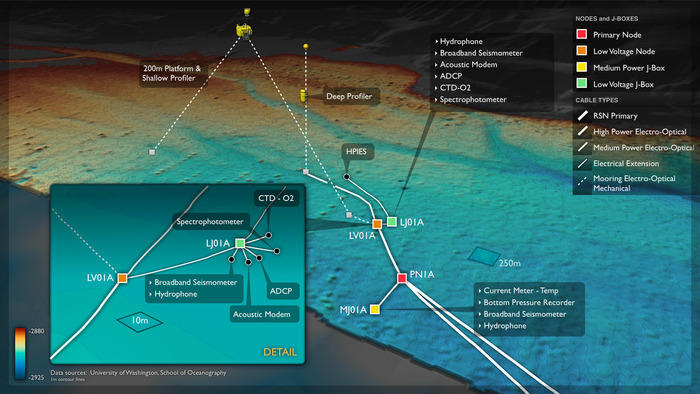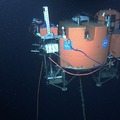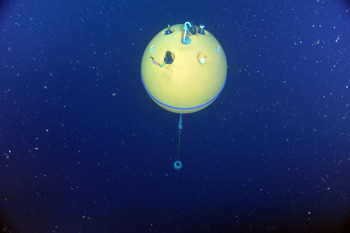Slope Base Study Site (PN1A)

The Northeast Pacific is one of the most biologically productive regions within the world's oceans
Location: 44.6ºN 125.4ºW Water Depth: 2906-2909 meters
The Slope Base study site (Primary Node PN1A) is located near the foot of the continental slope about 60 miles (100 km) west of Newport, Oregon. This site is just west of the Cascadia Subduction Zone, where mega-earthquakes have occurred, producing tsunamis that impacted both NW coastal commmunities, as well as those along the east coast of Japan. The last magnitude 9 earthquake occurred in 1700. Just to the east, is the steep, continental slope that may result in strong topographic forcing effects on ocean currents.
The coastal region of the Pacific Northwest is a classic wind-driven upwelling system where nutrient-rich deep waters rise to replace warmer surface waters. The result is a large increase in marine productivity that ranges from phytoplankton to fish to marine mammals. Near bottom fauna are periodically negatively impacted by flow of deep waters with very low oxygen concentrations (hypoxia events), and upwelling of corrosive, acidified waters onto the continental shelf.
Coupled with other Cabled and Endurance Array installations off the central Oregon coast, the Slope Base site provides a wide variety of opportunities for seismic and coastal studies, including cross-shelf and along-shelf variability.
Infrastructure and instruments at the Slope Base (PN1A) include:
- Extension Cables (installed 2013)
- Medium Powered J-Box (Secondary Node) (installed 2013)
- High-Bandwith Moorings with Profilers and Platforms (2014)
- Broadband Seismometer and Low-Frequency Hydrophone (seismic detection) (2014)
- Pressure Sensor (tides and tsunami detection; installed 2013)
- Current Meter (velocity of near bottom currents) (installed 2013)




